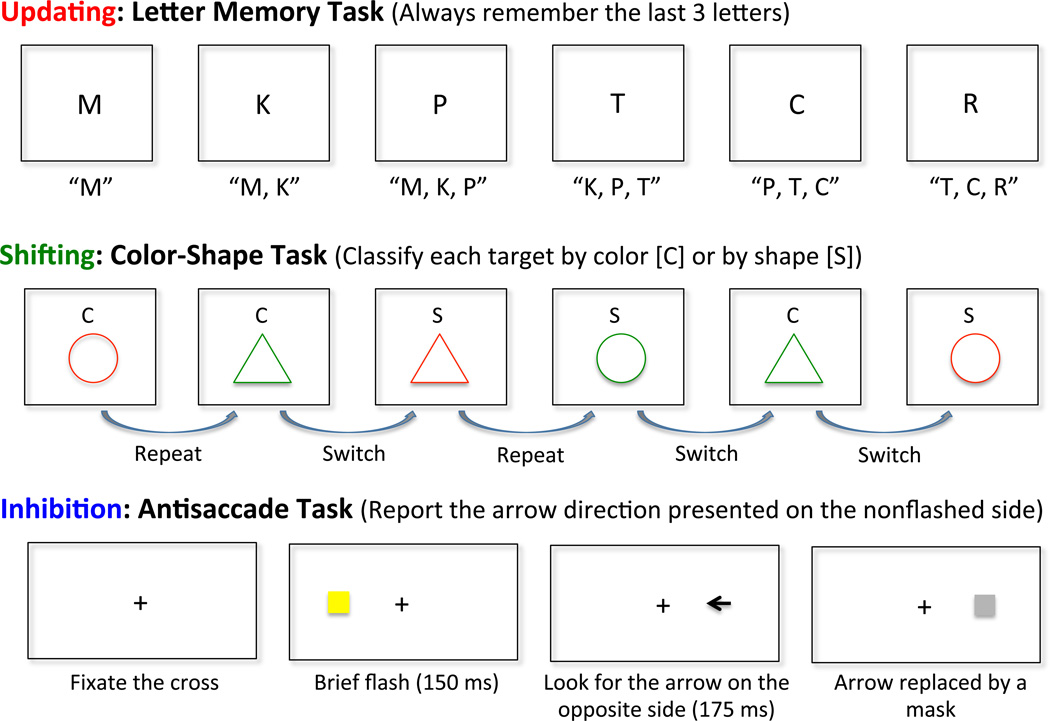Figure 1.
Schematic illustrations of three executive function (EF) tasks used in our current EF test battery. (A) In the letter memory task (an example of an updating task), participants are presented with a series of consonant letters one at a time. Their task is to report the last three letters after the presentation of the letter sequence ends. To ensure that participants constantly update their working memory contents, they are required to say aloud what the last three letters are after each letter. The dependent measure is the accuracy of the recalled letters at the end. (B) In the color-shape task (an example of a shifting task), participants see a letter cue first (either C or S) and, depending on the cue, they make a classification decision about the target item presented shortly afterwards in terms of color (green or red) or shape (circle or triangle) by pressing appropriate buttons on a button box. The dependent measure is the switch cost, namely, a reaction time difference between switch and repeat trials. (C) In the antisaccade task (an example of an inhibition task), participants first fixate on the center cross. When a brief flash occurs, they need to avoid looking at that flash and instead move their gaze toward the opposite side of the screen so that they can correctly identify and report the direction of an arrow briefly presented there. The dependent measure is the proportion of correctly reported arrows. More procedural details of these tasks and the details of other EF measures we use are provided inFriedman et al. (2008).

